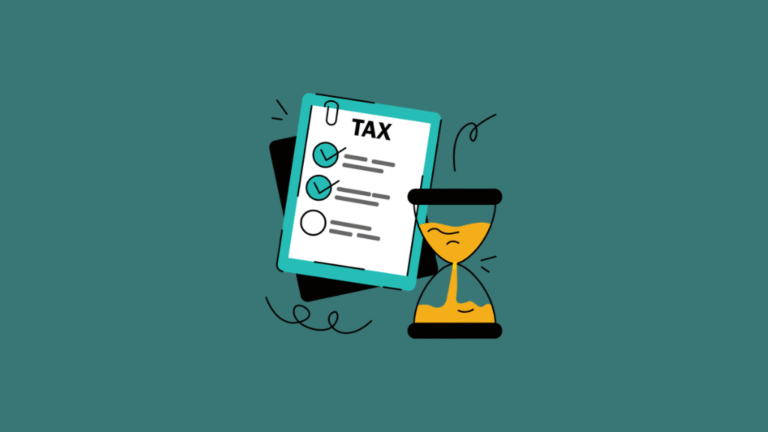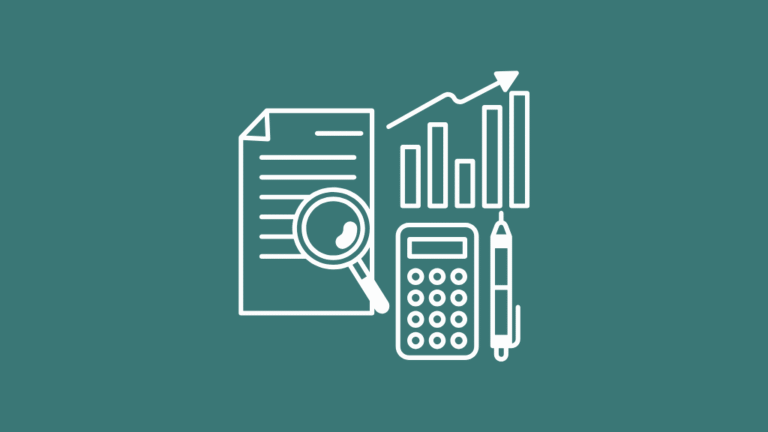In the UK, the 40% tax bracket is officially called the Higher Rate band. When people hear “40% tax bracket,” they often panic. It sounds like nearly half your income disappears the moment you hit a certain level. But that’s not how it works and if you’re earning enough to fall into this bracket, understanding how it actually functions can save you stress and potentially money.
Let’s break it down, simply and properly.
How the UK Tax System Works
Understanding where the 40% tax rate sits in the bigger picture helps make sense of your full income tax liability. Here’s how the UK tax bands look for the 2025 tax year.
income tax liability. Here’s how the UK tax bands look for the 2025 tax year.
| Tax Band | Taxable Income | Rate |
| Personal Allowance | Up to £12,570 | 0% |
| Basic Rate | £12,571 to £50,270 | 20% |
| Higher Rate | £50,271 to £125,140 | 40% |
| Additional Rate | Over £125,140 | 45% |
These bands haven’t changed since the previous year; the thresholds have been frozen, which means as incomes rise due to inflation or pay increases, more people are being pulled into higher tax brackets. This is known as fiscal drag.
So if you earn more than £50,271 in 2025, the portion above that threshold falls into the Higher Rate and gets taxed at 40%. But again that doesn’t mean you’re paying 40% on your entire income. Only on that upper slice.
How the 40% Tax Bracket Works
Let’s make this simple with real numbers.
If your total income for the tax year is £60,000, here’s how your tax would break down:
- £0 to £12,570 – Taxed at 0% (this is your Personal Allowance)
- £12,571 to £50,270 – Taxed at 20% (Basic Rate)
- £50,271 to £60,000 – Taxed at 40% (Higher Rate)
So, only the portion above £50,270 in this case, £9,730 gets taxed at 40%. That’s about £3,892 in higher-rate tax. Everything below that line is taxed at the lower rates.
| Important:
The 40% rate only applies to the income within that band, not to your entire salary. You’re not losing 40% of £60,000 : You’re paying 40% only on the slice above the threshold. |
How to Know if You’re in the 40% Tax Bracket
Now that you understand what the 40% tax bracket actually is, the next step is figuring out whether you fall into it. Good news: it’s easier than it sounds. Here’s how to check.

1. Calculate Your Taxable Income
Start with your total income for the year this includes salary, bonuses, freelance income, rental income, etc. Then subtract any allowances or tax reliefs you’re entitled to.
The most common one? Personal Allowance. For 2025, most people can earn £12,570 tax-free.
So, if you earn £65,000:
- £12,570 is tax-free
- £52,430 is taxable
Since that puts you over the £50,270 higher-rate threshold, you’ll fall partly into the 40% tax bracket.
2. Check Your Tax Code
Your tax code tells your employer how much tax to take from your wages. The standard code for 2025 is 1257L, which just means you’re getting the full £12,570 Personal Allowance.
If your code is different, it might mean:
- You’re getting more or less allowance
- You’re repaying underpaid tax.
- You have more than one job or source of income
A weird-looking code doesn’t always mean something’s wrong, but it’s worth checking if you’re unsure.
3. Use HMRC’s Income Tax Calculator
Use the HMRC income tax calculator, it’s free and easy.
Just enter:
- Your total income
- Your tax code
- Any deductions (like pension contributions)
The calculator will break down your estimated tax, showing how much is taxed at 20%, 40%, or 45%.
Heads-up: It’s just an estimate. If your circumstances change mid-year like a bonus, job switch, or freelance spike your final tax bill might differ.
Tax Allowances and Reliefs for Higher Rate Taxpayers
Just because you’re in the 40% tax bracket doesn’t mean you’re stuck paying 40% on every pound. The UK tax system includes several allowances and reliefs that can reduce your taxable income and, in some cases, pull you back under the higher-rate threshold altogether.
Here are some of the key ones you should know about:

1. Personal Allowance
The standard Personal Allowance for the 2025 tax year is £12,570 that’s tax-free for most people.
However, once your income hits £100,000, that allowance starts to disappear. You lose £1 of allowance for every £2 you earn over £100,000. By the time you earn £125,140, your Personal Allowance is wiped out completely.
Tip: Smart pension contributions or charitable donations could reduce your adjusted income and help you keep some or all of your allowance.
2. Blind Person’s Allowance
If you’re registered blind or severely sight impaired, you may qualify for the Blind Person’s Allowance, which gives you an extra £2,870 tax-free (on top of your Personal Allowance).
You can also transfer it to your spouse or civil partner if you don’t use it all.
3. Marriage Allowance
If you’re married or in a civil partnership and your partner is a basic rate taxpayer, you might be able to transfer up to £1,260 of your unused Personal Allowance to them.
That could reduce their tax bill by up to £252. It only applies if your income is below the Personal Allowance, so it’s more common among couples where one person isn’t working or earns under £12,570 but still worth checking.
4. Tax Reliefs That Lower Your Bill
There are also tax reliefs designed to bring down your taxable income, especially helpful if you’re hovering just inside the 40% band.
- Pension Contributions
Money you put into a pension gets tax relief — and for higher-rate taxpayers, that relief is at 40%. It’s one of the most effective ways to reduce your tax bill. - Charitable Giving (Gift Aid)
Donations to UK-registered charities using Gift Aid let you claim back the difference between the 20% basic rate and your 40% rate. For example, if you donate £800, it’s treated as £1,000 and you can reclaim £200 in tax relief. - Work-related Expenses
If you pay out-of-pocket for things like professional fees, uniforms, or travel for work, you may be eligible to claim tax relief. It won’t always be a game-changer, but every bit helps.
Strategies to Reduce Your Taxable Income
If you’re earning enough to brush up against the 40% tax bracket or you’re already there ; there are smart, legal ways to reduce your taxable income and soften the hit.
Here are four of the most effective strategies higher-rate taxpayers can use:

1. Make Pension Contributions
This is one of the best moves you can make both for your future and your tax bill.
You get tax relief on what you pay into your pension, up to:
- 100% of your earnings
- Or £60,000 per year (2025 annual allowance)
As a higher-rate taxpayer, this means:
- You pay £60 into your pension
- HMRC tops it up to £100
- And you claim back the remaining £20 via your tax return
That’s 40% tax relief, and it lowers your taxable income possibly even enough to bring you back under the 40% threshold.
2. Donate to Charity with Gift Aid
Gift Aid isn’t just good for charities, it’s good for your taxes too.
When you donate using Gift Aid:
- The charity claims back 20% (basic rate)
- You, as a higher-rate taxpayer, claim back the extra 20%
Example:
You donate £100.
The charity receives £125.
You claim back £25 in tax relief.
Multiply that by regular giving or larger donations, and the savings can add up fast.
3. Use Salary Sacrifice Schemes
If your employer offers salary sacrifice options, take a close look ; they can lower your taxable income and boost your benefits.
You agree to reduce your salary in exchange for things like:
- Extra pension contributions
- Cycle to work schemes
- Childcare or electric car leasing
Since the sacrificed salary isn’t taxed, your gross income drops, possibly bringing you under the 40% bracket and you still get the benefit.
4. Invest in Tax-Efficient Accounts
Tax-friendly investments don’t just help you grow wealth ; they also protect more of it from the taxman.
- ISAs (Individual Savings Accounts):
You can save or invest up to £20,000 per year (2025) and pay zero tax on any interest, dividends, or capital gains. - Pensions (Again!):
Not just tax relief going in but pensions also grow tax-free and can be withdrawn strategically to reduce tax in retirement.
💡 Heads-up: Investments come with risks. Do your homework or speak to a financial adviser if you’re not sure what’s right for you.
How to Claim Tax Relief as a Higher Rate Taxpayer
If you’re earning over £50,270 and paying 40% tax on part of your income, claiming the reliefs you’re entitled to isn’t just a smart move it’s money back in your pocket.
Here’s how to do it the right way:
1. Claiming Through Self-Assessment
If you already file a Self Assessment tax return (for example, if you’re self-employed, earn rental income, or have complex finances), most reliefs can be claimed directly in that return.
You can include:
- Pension contributions (outside of workplace schemes)
- Charitable donations (Gift Aid)
- Work-related expenses (like travel, uniforms, or professional fees)
Tip: Keep receipts and records during the year you don’t want to be scrambling at tax time.
2. Claiming Marriage Allowance
If your partner earns less than the Personal Allowance (£12,570) and you’re a basic rate taxpayer, they can transfer up to £1,260 of their allowance to you.
To claim:
- The lower-earning partner needs to apply at gov.uk/marriage-allowance
- You’ll need both of your National Insurance numbers
- If approved, your tax code gets adjusted ; the savings will reflect in your take-home pay
It’s quick to do and could save you up to £252 per year.
3. Claiming Work-Related Expenses
Bought tools, paid for uniforms, or used your own car for work? If your employer hasn’t reimbursed you, you might be eligible for a refund.
How to claim:
- If you file a Self Assessment return, include it there.
- If not, fill out a P87 form (available on GOV.UK) and submit it to HMRC.
- Keep evidence like receipts, mileage logs, or invoices HMRC can ask for them.
Even small claims add up over time. It’s worth it.
4. Don’t Overlook the Details
Claiming tax relief might feel like extra admin, but it’s often just a few forms and the reward is more money in your pocket. HMRC won’t automatically give you higher-rate relief for pension or charity contributions unless you actively claim it.
Make the 40% Tax Bracket Work for You
Paying 40% tax doesn’t mean losing 40% of your income; only the portion above £50,270 is taxed at that rate. With smart use of pensions, Gift Aid, and other reliefs, you can cut your tax bill significantly. The key is understanding what you’re eligible for and claiming it the right way. If you’re unsure where to start, QuilliamMarr can help. We specialise in helping higher-rate taxpayers reduce their liabilities and make smarter financial decisions. Let us take the stress out of tax so you can focus on what matters.
Frequently Asked Questions About the 40% Tax Bracket in the UK
-
What is the 40% tax bracket in the UK?
The 40% tax bracket, also called the Higher Rate, applies to income between £50,271 and £125,140 in the 2025 tax year. Only the portion of income within this band is taxed at 40%, not your entire salary.
-
Do I pay 40% tax on my full income if I earn over £50,270?
No, you only pay 40% on the amount above £50,270. Income up to that point is taxed at lower rates (0% and 20%). For example, if you earn £60,000, only £9,730 is taxed at 40%.
-
How can I legally reduce my 40% tax liability?
You can reduce your taxable income by contributing to a pension, donating to charity under Gift Aid, using salary sacrifice schemes, or investing in tax-free accounts like ISAs. These can lower your income below the 40% threshold or reduce the amount taxed at 40%.
-
What is fiscal drag and how does it affect the 40% tax band?
Fiscal drag happens when tax thresholds stay frozen while incomes rise. This pushes more people into the 40% tax bracket without any actual increase in their real income, due to inflation or pay raises.
-
How do pension contributions help reduce 40% tax?
Pension contributions qualify for 40% tax relief if you’re a higher-rate taxpayer. This means putting £60 into your pension could be worth £100, reducing your tax bill and taxable income.
-
When do I lose my Personal Allowance?
You lose £1 of your £12,570 Personal Allowance for every £2 you earn above £100,000. At £125,140, it’s completely gone, which means your whole income becomes taxable.
-
How do I know if I’m in the 40% tax bracket?
Check if your taxable income is over £50,270 after deducting your Personal Allowance and any other reliefs. Use HMRC’s online tax calculator or review your tax code for clarity.
-
Can salary sacrifice schemes lower my tax rate?
Yes, using salary sacrifice for things like extra pension contributions, childcare, or cycle-to-work schemes reduces your gross income, which may help you avoid entering the 40% tax band.
-
Do I have to file a Self Assessment to claim 40% tax relief?
Yes, for things like charity donations and pension contributions not handled by your employer, you’ll need to claim the higher-rate relief through Self Assessment or by submitting a P87 form.
-
Is there any help for married couples in the 40% bracket?
If one partner earns below the Personal Allowance and the other is a basic rate taxpayer, they can use Marriage Allowance to transfer £1,260 of allowance and save up to £252 per year. This doesn’t apply if you’re already paying the 40% rate.















